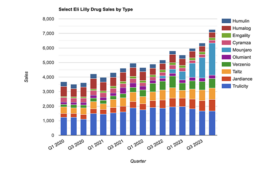Drug companies and their development partners who are seeking to increase clinical success rates of new drug candidates are developing tools to help them predict the likelihood of marketing approval and incorporating business planning earlier in clinical development, according to R&D leaders who recently participated in a roundtable discussion convened by the Tufts Center for the Study of Drug Development.
“The research-based drug industry is racing to boost its research pipelines, as existing patents expire and development times continue to lengthen,” said Tufts CSDD Director Kenneth Kaitin. “Drug companies are exploring new approaches to product development that focus on increasing the probability of clinical success and speeding time to market.”
One tactic, Kaitin cited, focuses on statistical models that help predict clinical success. For example, his team, working with a pharmaceutical company, created a simple algorithmic model called the Approved New Drug Index (ANDI)– modeled on the five-factor APGAR score widely used in delivery rooms to evaluate the health of newborns– that reliably predicts which oncology products emerging from Phase II testing are likely to receive marketing approval.
The team concluded that, compared to the prevailing industry metric, the data support assigning a much higher probability of success to oncology drugs with top ANDI scores of 7 and 8, and much lower probabilities of success to those with scores of 0 to 4.
Date: April 15, 2014
Filed Under: Drug Discovery




